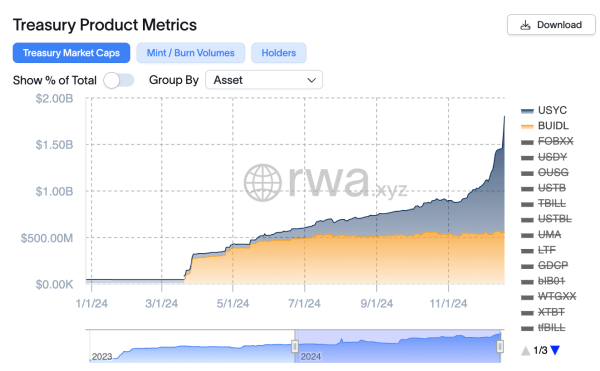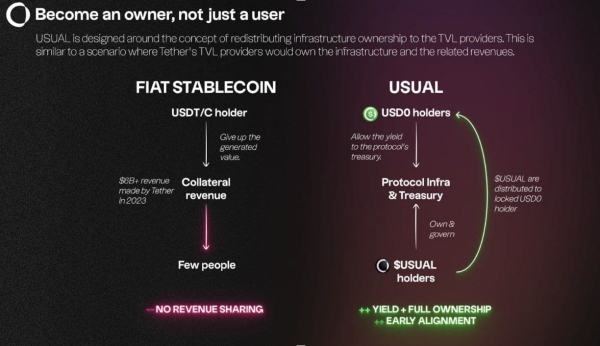DeFi Protocol Usual’s Surge Catapults Hashnote’s Tokenized Treasury Over BlackRock’s BUIDL
Hashnote's USYC is the primary backing asset of the red-hot decentralized finance protocol Usual, whose USD0 stablecoin zoomed over $1 billion market capitalization in a few months.

What to know:
- Asset manager Hashnote's USYC has become the largest tokenized U.S. Treasury product, toppling BlackRock and Securitize's BUIDL, rwa.xyz data shows.
- Much of the growth was due to the rapid ascent of DeFi protocol Usual and its USD0 stablecoin, with USYC serving as a primary backing asset.
- Hashnote's quick growth highlights how tokenized product issuers can grow by making their tokens interconnected with the broader blockchain economy.
There's been a change of guard at the rankings of the $3.4 billion tokenized Treasuries market.
Asset manager Hashnote's USYC token zoomed over $1.2 billion in market capitalization, growing five-fold in size over the past three months, rwa.xyz data shows. It has toppled the $450 million BUIDL, issued by asset management behemoth BlackRock and tokenization firm Securitize, which was the largest product by size since April.

USYC is the token representation of the Hashnote International Short Duration Yield Fund, which, according to the company's website, invests in reverse repo agreements on U.S. government-backed securities and Treasury bills held in custody at the Bank of New York Mellon.
Hashnote's quick growth underscores the importance of interconnecting tokenized products with decentralized finance (DeFi) applications and presenting their tokens available as building blocks for other products — or composability, in crypto lingo — to scale and reach broader adoption. It also showcases crypto investors' appetite for yield-generating stablecoins, which are increasingly backed by tokenized products.
USYC, for example, has greatly benefited from the rapid ascent of the budding decentralized finance (DeFi) protocol Usual and its real-world asset-backed, yield-generating stablecoin, USD0.
Usual is pursuing the market share of centralized stablecoins like Tether's USDT and Circle's USDC by redistributing a portion of revenues from its stablecoin's backing assets to holders. USD0 is primarily backed by USYC currently, but the protocol aims to add more RWAs to reserves in the future. It has recently announced the addition of Ethena's USDtb stablecoin, which is built on top of BUIDL.
"The bull market triggered a massive inflow into stablecoins, yet the core issue with the largest stablecoins remains: they lack rewards for end users and do not give access to the yield they generate," said David Shuttleworth, partner at Anagram. "Moreover, users do not get access to the protocol’s equity by holding USDT or USDC."
"Usual’s appeal is that it redistributes the yield along with ownership in the protocol back to users," he added.

The protocol, and hence its USD0 stablecoin, has raked in $1.3 billion over the past few months as crypto investors chased on-chain yield opportunities. Another significant catalyst of growth was the protocol's governance token (USUAL) airdrop and exchange listing on Wednesday. USUAL started trading on Binance on Wednesday, and vastly outperformed the shaky broader crypto market, appreciating some 50% since then, per CoinGecko data.
BlackRock's BUIDL also enjoyed rapid growth earlier this year, driven by DeFi platform Ondo Finance making the token the key reserve asset of its own yield-earning product, the Ondo Short-Term US Government Treasuries (OUSG) token.



